Reptile surveys are designed to detect suitable habitats, confirm or deny the presence of reptiles and if they are present to identify the species and population size. Our reptile surveys take place in a number of different settings such as sand dunes, brownfield and greenfield sights, grassland, heathland, moorland and woodland. The type of habitat will depend on the species of reptile.
Local Planning Authorities often request these surveys as part of the planning process, therefore if common reptiles are found on the site our ecologist will make this clear to your local planning authority within the report. We contribute to successful planning applications by producing a method statement that will assist the developer, enabling your project to move forwards.
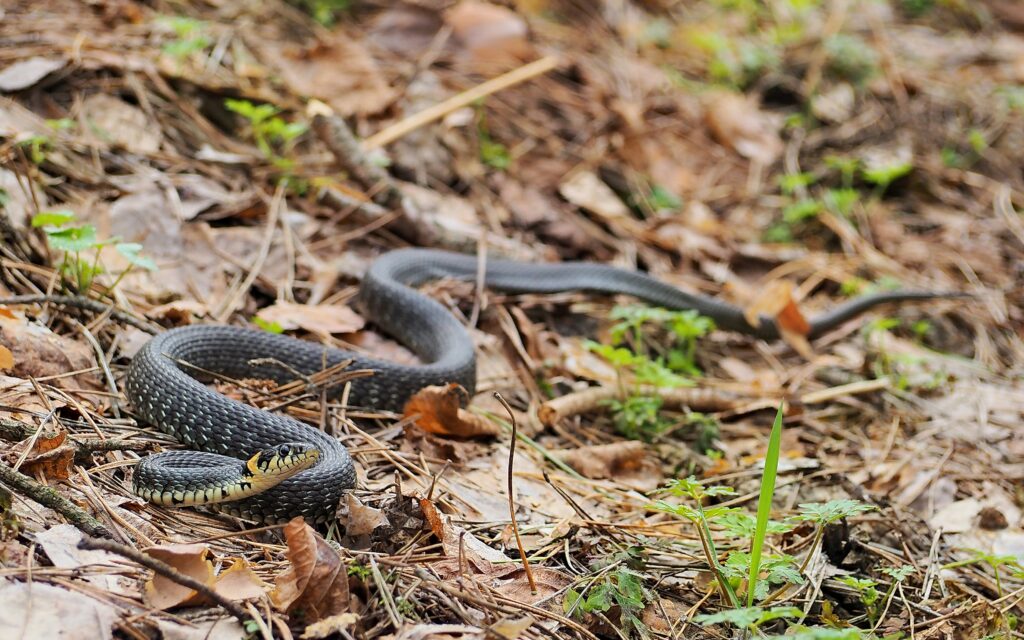
Visit 1: Scoping the area for reptile hotspots e.g areas for basking or shelter and determining the use of features on site by reptiles. Distributing around potential suitable locations for refugia.
Visit 2-6: Visits to check for presence of reptiles under refugia and further visual checks.
Visit 7: Final check and collection of surveying materials.
Visit 1-2: Mid-March – early April
Visit 3-4: April – May
Visit 5-6: Late May -end June
Visit 7: Late Aug – Late Sept
The selection of most suitable days may vary and may be best discussed on a two week basis with the client to capture most optimum weather conditions.
The UK has six native species of reptile with four common reptile species that are protected by law. They are protected under the Wildlife and Countryside Act 1981 and the Conservation of Habitats and Species Regulations 2017.
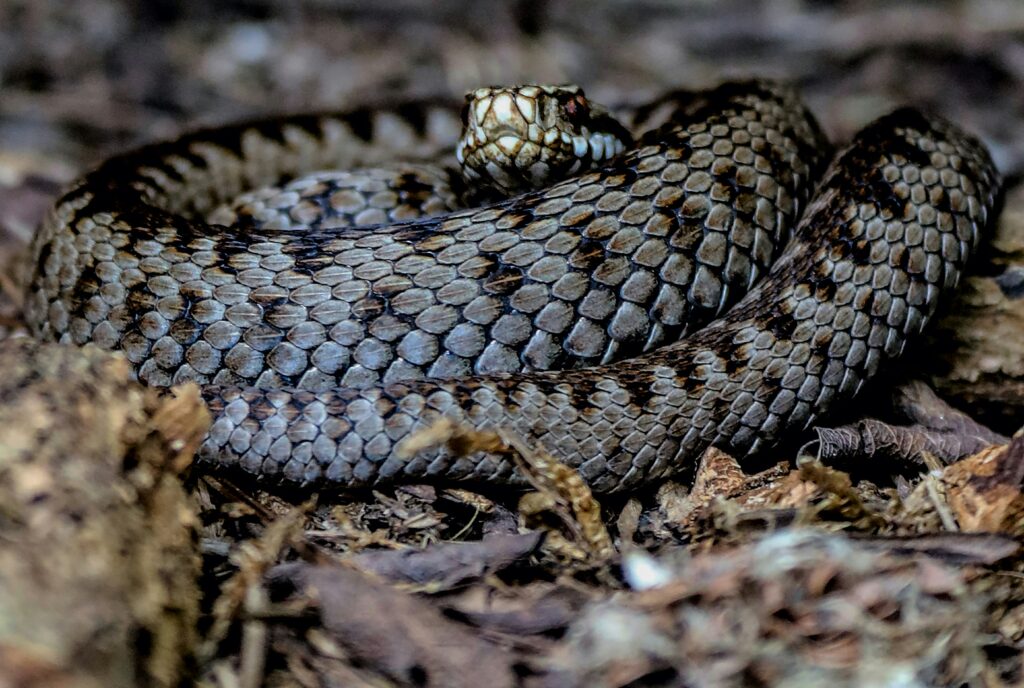
Adder (Vipera Berus) – The only venomous snake, the shy adder can be spotted basking in the sunshine in woodland glades and on heathlands.
They are greyish in colour, with a dark and very distinct zig-zag pattern down its back, and a red eye. Males are usually more silvery-grey in colour, while females are more light or reddish-brown. Usually seen in March to October.
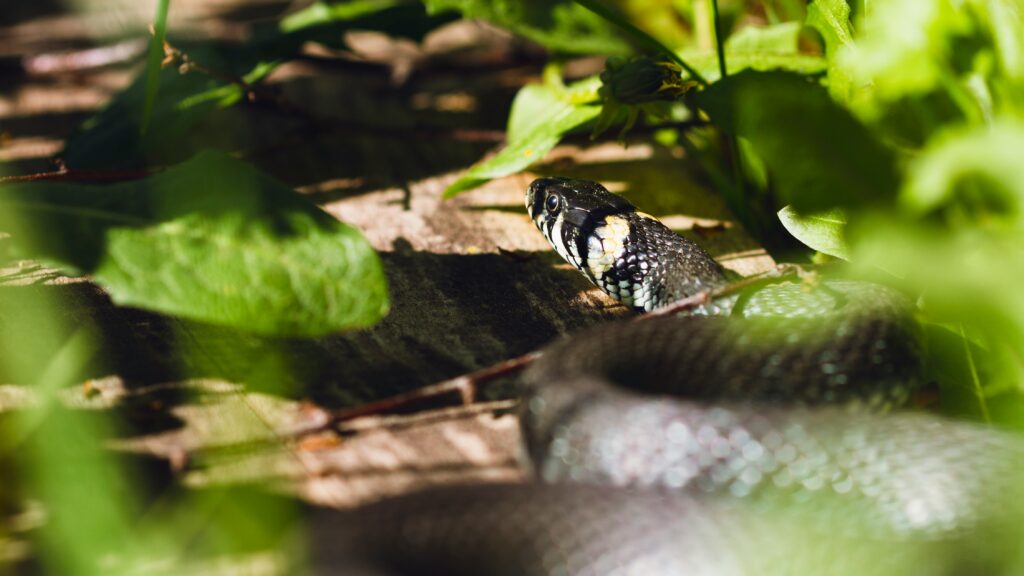
Grass Snake (Natrix Natrix) – The grass snake is the UKs longest snake, however don’t panic if you find one in the compost heap – they are harmless to humans! This green and yellow beauty likes to hang out in grasslands and wetlands. You can usually spot them from April to October.
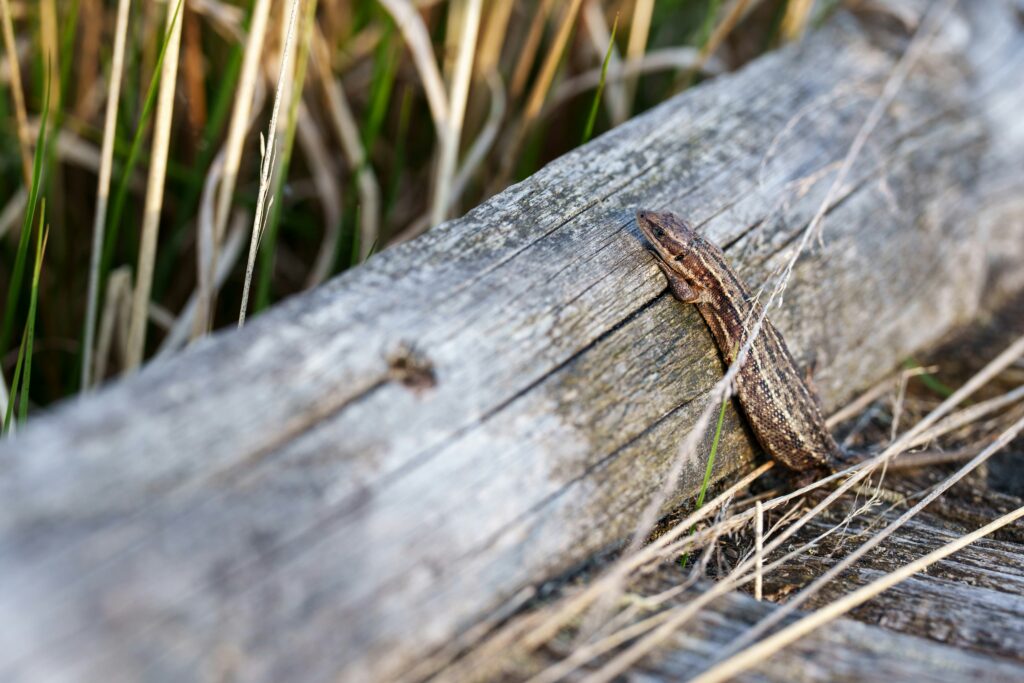
Common Lizard (Zootoca Viviparar) – Living up to its name, it is the UK’s most common and widespread reptile. It is found across many habitats, including heathland, moorland, woodland and grassland, where it can be seen basking in sunny spots.
It is an unusual among reptiles as it incubates its eggs inside its body and ‘gives birth’ to live young rather than laying eggs. Adults emerge from hibernation in spring, mating in April to May and producing three to eleven young in July.
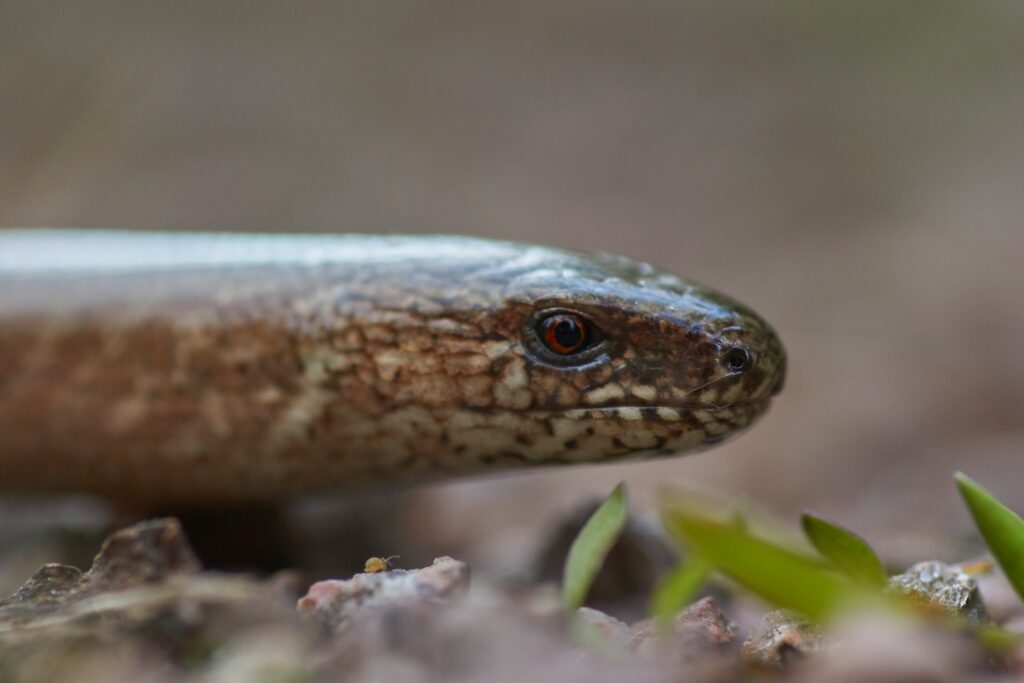
Slow Worm (Anguis Fragilis) – Despite appearances and its name, it is actually a legless lizard, not a worm nor snake! Look out for it basking in the sun on heathlands, grasslands, or in the garden, where it favours compost heaps.
It is much smaller than a snake and has smooth, golden-grey skin. The males are paler in colour and sometimes have blue spots. While the females are larger with dark sides and a dark stripe down their back.
The two remaining reptile species out of the six present within the UK are the sand lizard (lacerta agilis) and the smooth snake (coronella austriaca). These are considered much rarer and feature within the list of protected species under the European Directive and the UK’s Habitats Regulations 2017.
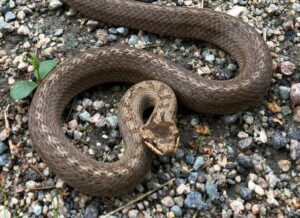
Smooth Snake (Coronella Austriaca) – The rare smooth snake can only be found at a few sandy heathland sites in the UK. It looks a bit like an adder, but lacks the distinctive zig-zag pattern along its back.
They hibernate from October to April. In spring, males compete to win females who incubate their eggs internally and ‘give birth’ to 4 to 15 young in September.
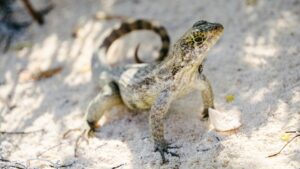
Sand Lizard (Lacerta Agilis) – The sand lizard is extremely rare due to the loss of its sandy heath and dune habitats. However reintroduction programmes have helped establish new populations. Females are a sandy-brown colour with rows of dark blotches along the back; males have green flanks that are at their brightest during the breeding season making them easy to spot.
Do you require a reptile survey? Please note due to comprehensive nature of our phase 2 survey our prices start from £1,340 as multiple visits are needed over a period of time. To find out more about how ProHort Ltd can help you, get in touch with us by calling 01782 479 479 or email us at [email protected].
If you need any additional information about the ecological surveys and assessments that ProHort can provide, please get in touch.
At ProHort we always provide you with our best price, first time as we know the importance of getting value for money.
Ecological surveys and assessments are priced on a case by case basis, depending upon a variety of factors, including the complexity of the development project.